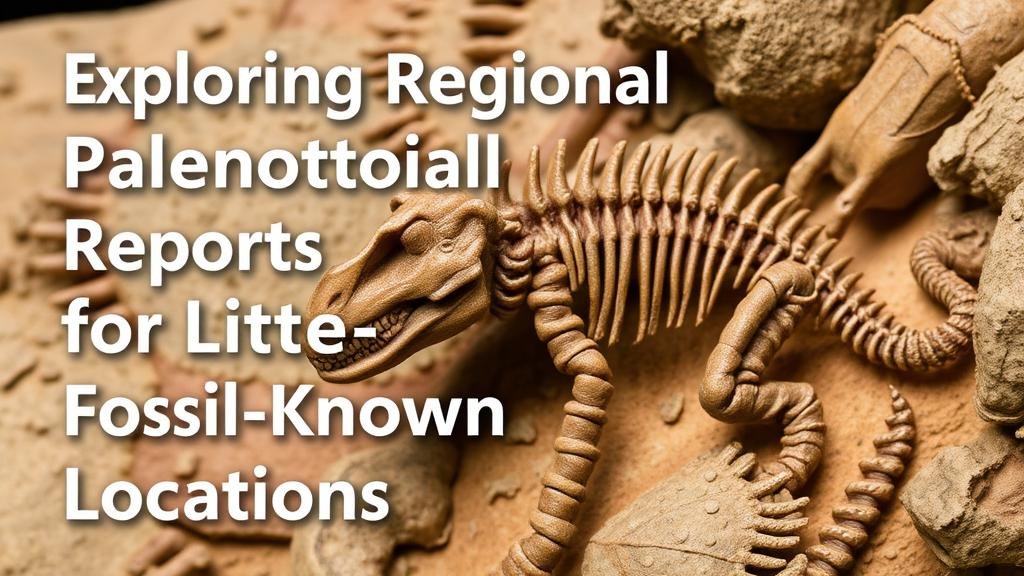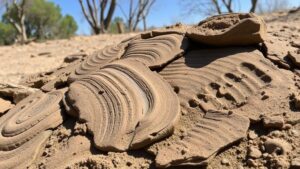Exploring Regional Paleontological Reports for Little-Known Fossil Locations
Exploring Regional Paleontological Reports for Little-Known Fossil Locations
Paleontology, the scientific study of the history of life on Earth through the examination of plant and animal fossils, relies heavily on regional reports to document fossil findings. This article explores lesser-known fossil locations by analyzing regional paleontological reports, highlighting the significance of these findings, and offering insights into their impact on our understanding of prehistoric ecosystems. By examining specific examples and providing data, this article aims to underscore the importance of documenting and researching these locations.
The Importance of Regional Paleontological Reports
Regional paleontological reports serve as critical documentation that compiles findings from various localities, providing a broader context for the evolutionary history of species. e reports often contain detailed descriptions of fossil types, geological contexts, and stratigraphic information, enhancing our understanding of biodiversity and extinction events. For example, the Paleontological Societys annual reports have gathered and published data from remote areas, which might otherwise remain unrecorded and unstudied.
Case Study: The Fossil Cliffs of Sussex, England
The fossil cliffs along the south coast of England, particularly in Sussex, represent one of the more obscure fossil sites in the world. These cliffs, composed mainly of chalk and sandstone, are home to an array of fossils dating back to the Late Cretaceous period, approximately 100 to 66 million years ago. In particular, fossils of marine reptiles, such as Icthyosaurs and Plesiosaurs, have been reported in this region.
Studies published in reports from the British Geological Survey (BGS) have detailed fossil discoveries that include both skeletal remains and trace fossils, providing insights into the biodiversity present in ancient marine environments. Researchers have noted that these fossils not only contribute to understanding specific species but also to the ecology of the Cretaceous period.
Identifying and Documenting Lesser-Known Locations
Though famous sites like the Badlands of South Dakota or the La Brea Tar Pits dominate paleontological discussions, many equally significant sites are lesser-known. Recent efforts in paleontological research aim to identify and document these areas, expanding the geographic and biological distribution of paleontological knowledge. Below are examples of notable lesser-known locations:
- The Green River Formation, Wyoming: This site is famous for its exceptionally preserved fish fossils and provides evidence of the Eocene epochs diverse aquatic ecosystems.
- The Gobi Desert, Mongolia: Documented extensive fossil sites which include dinosaur eggs and well-preserved skeletons, helping researchers understand dinosaur reproduction and nesting behaviors.
- Crato Formation, Brazil: Known for its beautifully preserved fossils, including insects and plants, dating back to the Early Cretaceous that illuminate the complexities of ancient forest ecosystems.
Challenges in Discovering Little-Known Fossil Locations
Uncovering lesser-known fossil sites involves several challenges. Accessibility is a significant barrier; many of these locations are in remote or protected areas where fossil collection may be restricted. Also, lack of funding and resources can impede research and documentation efforts, limiting the overall understanding of these sites.
Also to these practical challenges, the scientific community often prioritizes well-known sites due to the volume of research and funding available. As a result, many valuable fossil discoveries may be overlooked or underreported. A concerted effort involving local researchers, amateur paleontologists, and educational institutions can bolster the exploration and documentation of these lesser-known sites.
Real-World Applications of Regional Paleontological Research
The implications of understanding lesser-known fossil locations extend beyond academic knowledge. These insights can inform conservation efforts, as appreciating historical biodiversity can guide current ecological management strategies. For example, understanding past extinction events due to climate change can provide critical lessons for modern conservation biology.
Also, regional reports serve as educational tools, fostering interest in paleontology among students and the public. They can inspire citizen science initiatives, inviting participation in fieldwork and fossil identification, thereby enriching community engagement in science.
Conclusion
Regional paleontological reports are invaluable resources that document the rich tapestry of Earths history. By focusing on lesser-known fossil locations, researchers can uncover essential insights into ancient ecosystems, evolutionary biology, and conservation strategies. As the paleontological community continues to explore these obscure sites, the knowledge gained will enhance our understanding of life on Earth and the historical contexts that shaped it. Future efforts should prioritize the survey and publication of findings from these locations to ensure that no significant discovery remains hidden.



